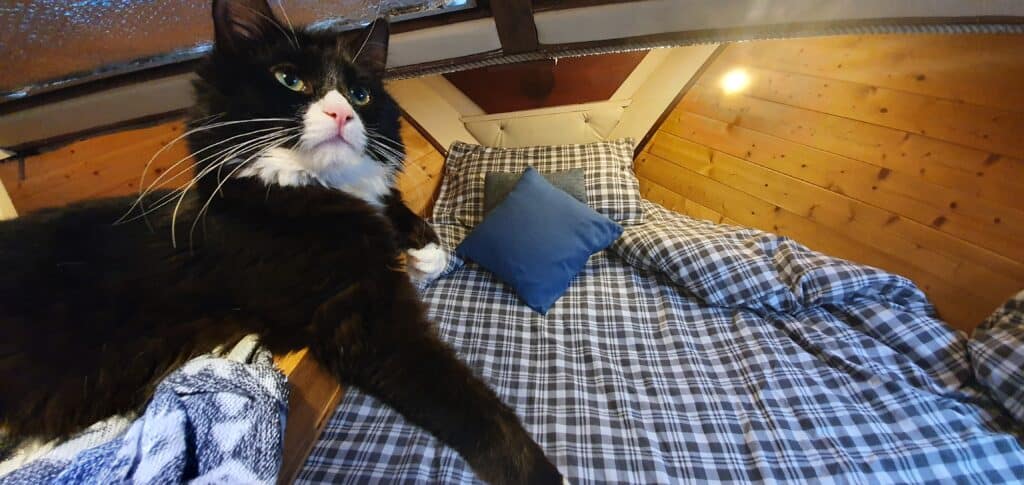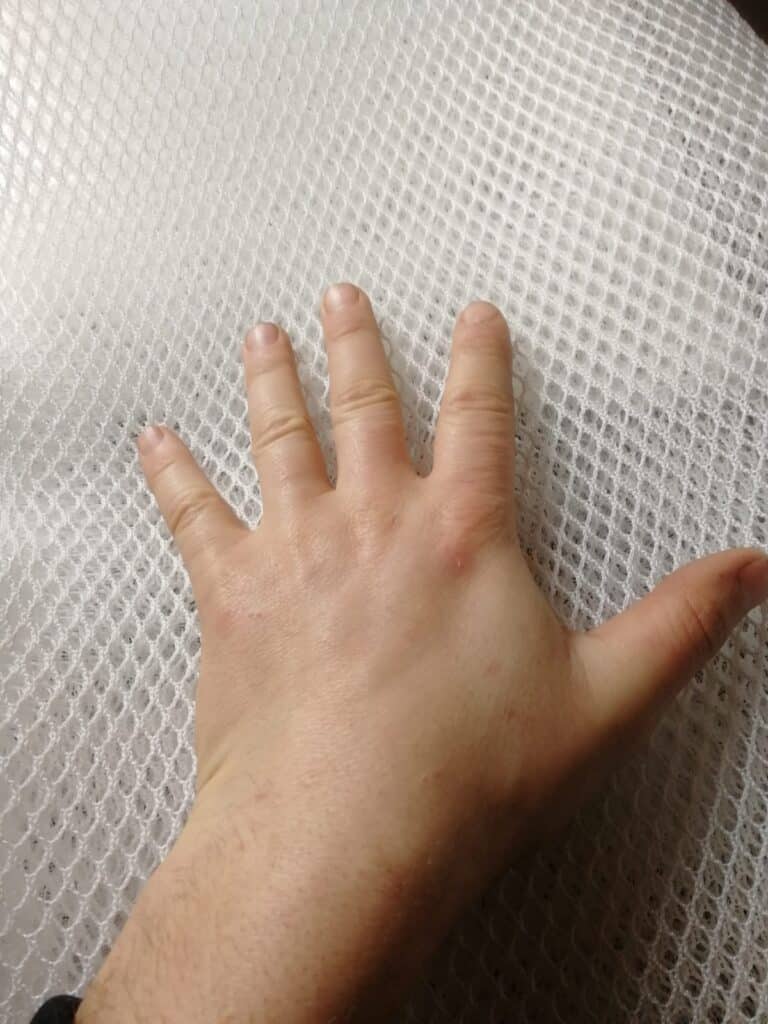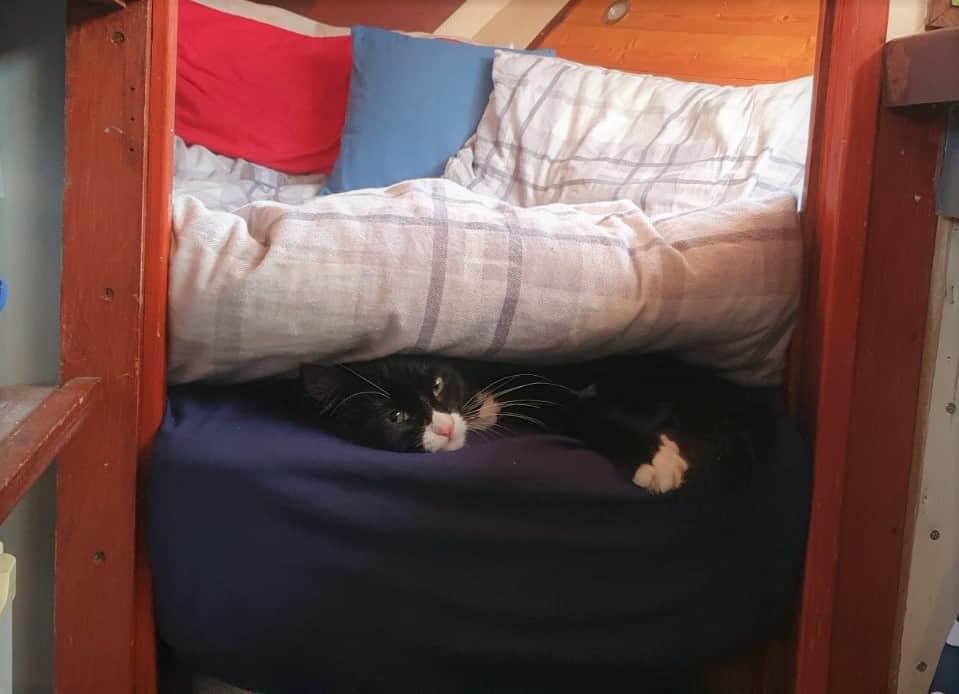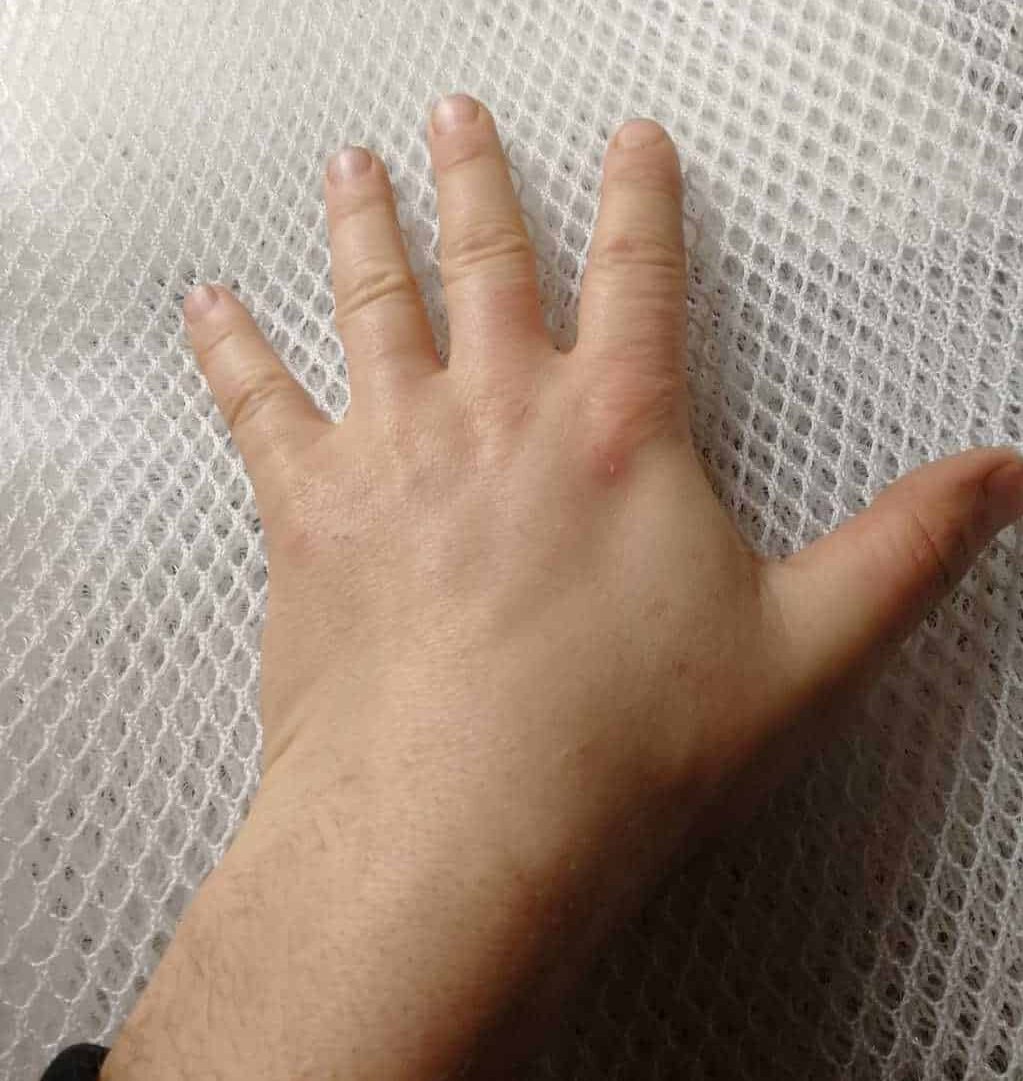
Dampness in a boat is a constant battle. My first experience of how bad things can become was in Brighton. We were fresh-faced newbies in the boating arena and had purchased a 27ft fibreglass single skin yacht. Naively we thought all we had to do to stay dry and warm was chuck a little 500-watt Dimplex heater on, oh how we were wrong!
All tucked away, warm and toasty under the half berth I noticed, water pooling above my head on the fibreglass. We had fixed all of the leaks, how could this be? I thought to myself. We moved the foam mattress from the half berth to inspect the area and found that the mattress was completely saturated with water. It was then that I started to read about the principles of conductive heat transfer, insulation and ventilation, CIV For short, do you like how I made that up?
Not only is dampness uncomfortable, but it will rot your boat from the inside out. Mould spores will form on non-insulated walls. Water will drip from the roof like your a cave dweller. You'll also end up smelling like one too!
A good example of this would be a house where someone is complaining about the damp. Turns out they've been drying clothes inside with all of the windows shut, surprise surprise, there's mould growing on the ceiling and a pungent smell. It's not the landlord's fault, it's yours you caveman, there's a reason we invented tumble dryers to expel concentrated damp air through a series of pipes, duhhh!

Table of Contents
WHY DO BEDS GET DAMP ON BOATS?
When you're wrapped up in bed your body radiates, this causes perspiration. If you have a quilt over your body then the moisture will often take the path of least resistance. Moisture travels down through your foam mattress until it meets a barrier. If this barrier is, for instance, a cold sheet of plywood, then water will pool under your mattress.
So what does this mean?
Ever wondered why the windows on a boat are constantly steamed up? It's because the water settles and condensates on the cold surface. This is because the glass itself is a poor insulator, hence why in houses people have double or even triple-glazed windows, which trap a pocket of air in between the two surfaces. On older boats and in particular sea going vessels double glazing is uncommon. You'll see it on ferries, and commercials vessels, but older motor cruisers and yachts rarely came with double glazed windows. Normally just leaky aluminium frames and cracked perspex.
The same principles, apply for beds on a boat.
Traditionally a bed would have a frame, which elevates it off a cold surface (floor) and bed slats which allow ventilation. In a boat, having bed slats in a Vberth for example isn't an easy option. The lockers need to be accessed constantly and the framework often doesn't exist. This means we we have to be more creative when it comes to fighting dampness.

Our Review
I've got to admit when I bought this matting I wasn't expecting a high-quality marine product. I was expecting a flimsy bit of fabric, something similar to the nonslip mats you can purchase from pound shops or your local DIY store.
We were having dampness problem with our current VBerth of our Seamaster 950. Water was pooling under the bed due to poor ventilation. This could only be ignored for so long as begins to breakdown the layers of marine varnish present on the plywood, this results in rot, smell and later on delamination.
Our plan of attack was to insulate under the lockers, which would hopefully help reduce the dampness.
First of all, we went into the V-berth lockers and insulated them using thick closed-cell foam and multiple layers of aluminium Reflextrix. This brought the ambient temperature of the plywood underneath our bed up but it didn't provide any ventilation, water was still pooling, we were wrong.
Circular holes were then cut in the side of lockers, to allow airflow and heat from the boat to circulate underneath our bed. As you can imagine with a tightly squeezed V-Berth mattress there isn't room for any ventilation. We had air circulating under the bed but ultimately the plywood under our bed and the foam mattress were still sandwiched together with no room for airflow.
At this point, I thought to myself maybe I'll just but a large sheet of closed-cell foam and lay it under the mattress. The kind of material camping mats are made of. However, have you ever wondered why when you pick up your foam camping mat after a night of camping the plastic groundsheet under is soaking wet? Simply put, water always finds a way around.
Okay so if closed-cell foam wasn't a quick fix, I was now looking at building a slatted frame. Can I bothered to do a load of woodwork, outside in the rain, mid-winter in a wet muddy boat yard, no, hell no.
I'm running out of options here, what about a Froli System? For me this option looked incredibly expensive and a bit like a med evil torturing device, not something I would associate with luxury and comfort however granted once it's setup I can imagine it's a great piece of kit. Much like the water permeating through my mattress I needed a solution that provided the path of least resistance (effort)
So enter DRY-Mat Anti-Condensation Underlay for Boats. It was reasonably affordable, for a V-berth of my size. It came in at £69.00 and left us with enough to fabricate a cat bed in the future! It was easily cut with a pair of sturdy scissors, kitchen scissors etc.
The material excelled my expectations, it has a really low compression rate. Pressing down with one hand it was hard to compress a centralised area. It spreads the weight out evenly stopping the mattress from coming into contact with the substrate below. Now hot air from the boat can circulate under the footer of the bed and throughout the area. It's completely dry. It is made up of thousands of individual Micro springs that allow air to circulate between your mattress and bed base. As it is only 10mm deep don't think you can sleep on it alone, not unless your enjoy mild torture. You'll still need a lovely thick slice of foam.
All in all it does its job percetly, application is easy and the excess can be used on other projects. The unique construction provides an excellent anti moisture underlay for ventilation under mattresses and cushions on your Yacht, Motor Boat or Cruiser.
PROS
- Easily available in the UK, we were able to order with amazon and received the parcel within the next working day.
- The material is easily cut with a sturdy pair of scissors.
- It's affordable in comparison to the other marine solutions available on the market such as the Froli System.
- It's foldable and easy to cut in situ.
- Pieces together easily, and can be joined using miniature snap ties.
- Fresh, Hygienic & Healthy Bed.
- Protects Against Mould, Bacteria and Moisture.
- Quick & Easy to Fit.
- Doesn't Degrade Easily.
- Machine Washable up to 60 degrees.
CONS
- You'll need a strong pair of scissors.
- Your offcuts will last forever, find a use for them!
Disclaimer
I decided to review this product after I purchased it for my own boat. I tend to review products that I I use myself, supporting independent marine businesses where I can. I find good good products and review them. If companies want to pay may after then so be it.


Very interesting and informative. I just purchased a 25 foot sailboat and am learning every day. Thanks for the info.
Hey Paul, thanks for the feedback on the dry-mat article! All my learning started with a Jaguar 27, between Youtube and Facebook tech groups its grown from there. If you need any help or advice my email is [email protected]
Wonderful honest review, I’ve been looking for a product like this for a while for our narrowboat and its good to have some independent advice. All other products I’ve found only sell in the US so this is super helpful, Thanks very much.
Rachel
Hey Rachel,
Thanks for the feedback, it’s a serves as good inspiration to write more!
Fantastic review. I have been looking at various options. I am thinking ? ….because moisture travels down through the mattress when sleeping , as well as using the underlay what about a waterproof terry mattress cover followed by something soft then bed sheet …..Would that prevent a little more moisture …what are your thoughts ?
Now I’m off to review the different makes or crystal water traps …… ? Thankyou !